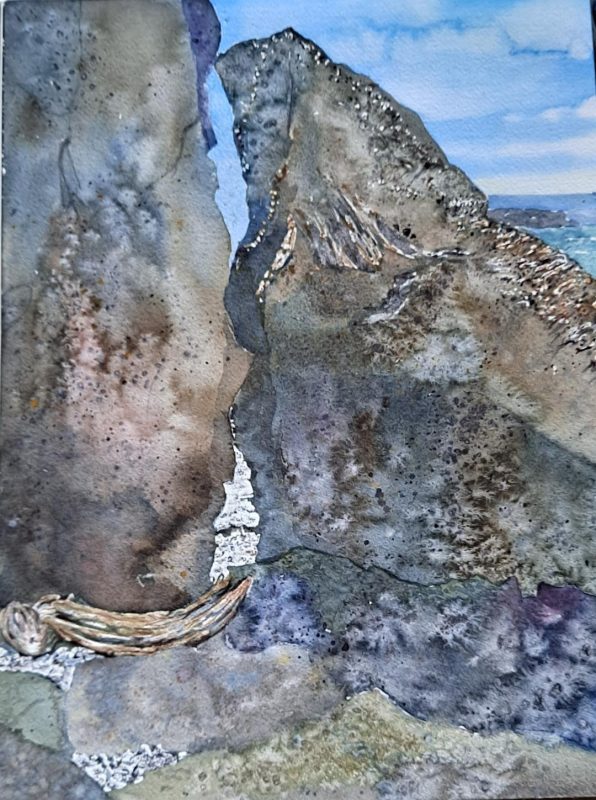Kaʻena is the end of the West coast and meets the other side, at Mokuleia on the North Shore. From Keawaʻula to the point, it is a nature preserve and home to many nesting birds, such as the Layan albatross, the shearling, and others. It is very common to see seals sunning and resting at the point and during winter, whales offshore.
Hawaiians say this is where souls leave for another realm. It is a place where families can take their farewell and also feel connected to their family who has passed ahead.



On a trip to the Galapagos in 1999 when we came ashore on those islands, the birds were completely unafraid and indifferent to us, they sat on their nests, fed their young, fished off shore, it felt like stepping back 5000 years back in time. Ka’ena is like this, and thank God that it was made into a nature reserve, because elsewhere, the plants and animals have adapted to sharing their space with us and how we terraform our environment with roads, houses, machines, and trash.
This painting of the ‘runway’ on the Wai’anae side of Ka’ena is a nursery, where the albatross mate, hatch, and teach their young to fly. If you are observant, you can see them raising their heads up towards the sky, dancing an albatross tango. They mate for life and each year meet for their Hawaiian honeymoon. When the teenagers have gotten their feathers, they waddle up the hill and then jump off for short flights like the Wright brothers. Once they get the hang of it, they will continue past over the trail and over the sea, circling around.
The scene of the fishermen at dusk came to me as a vision of how this area could be, if Koa ‘Ike’s vision were realised. How lovely that would be! That was what I thought as I painted it, but afterwards, I wondered if it were not a vision of past fishermen who had passed through Ka’ena. I do not know, but it doesn’t feel important to tie an experience definitely down to then, now, or tomorrow, it can be all three.

This last painting is of a pohaku outcropping at the end of the trail. It is smooth black basalt in the middle of white coral rubble. I always stop and sit in it’s shadow, and enjoy watching whoever is before me, whether it is seals or whales or tourists. To me, these two rocks look like they are in a perpetual honi, kissing and greeting each other.
Here is some great music created by Keone Nunes and Keale: Kānehūnāmoku and speaks about this area. When I read the liner notes and lyrics it made my heart swell:
KAULANA WALE NA MOKU A KANE / PUAI I KA WAI OLALANALANA NO HOI O KANEHUNAMOKU / KANI AKU, KANI MAI O NA TUPUA
Famous are the lands of Kane / source of living water Kanehunamoku truly rises / those who guard it call it forth
Jan says this vision for creating a place of refuge on the West Coast is completely possible. Look at the Tom family, who donated their land to make the present Kaʻena natural reserve possible. The concept of mālama ʻaina is something that all of us can teach and learn from each other no matter how much koko Hawaiʻi one has, or how many years or generations you have called Hawaiʻi home. Ke Akua has called each of us to answer how we choose to care for our home. Jan’s photos of Ka’ena can be seen here.